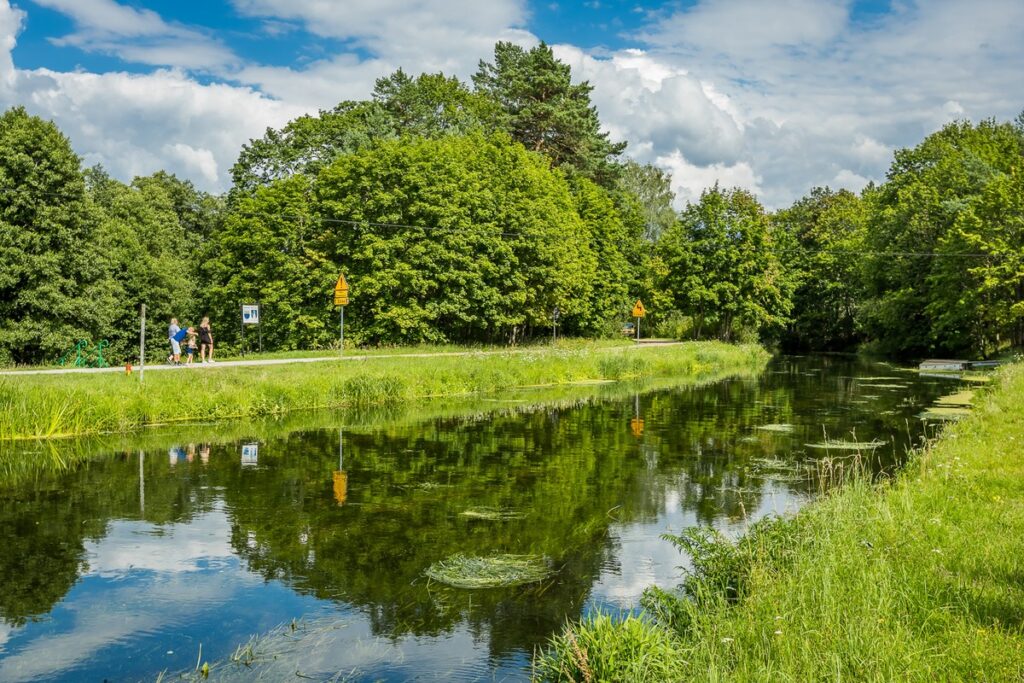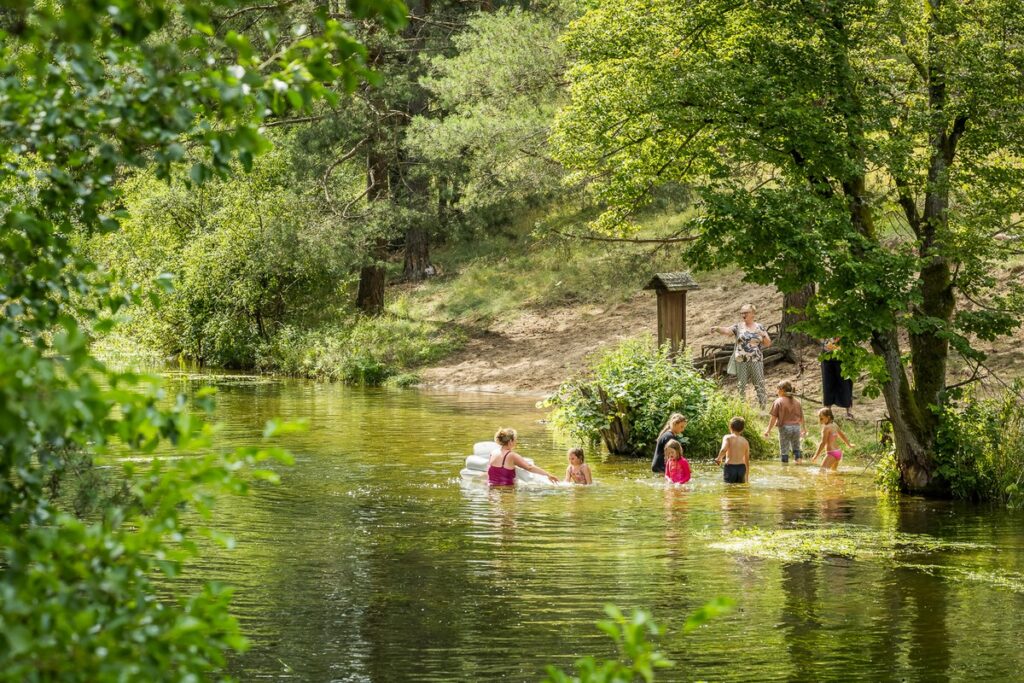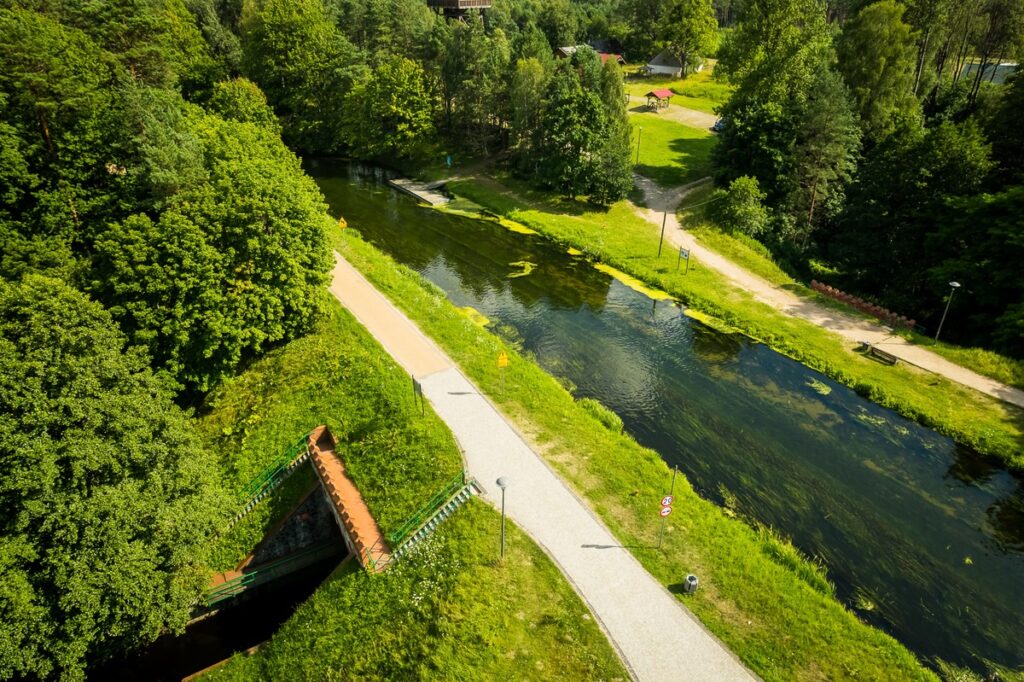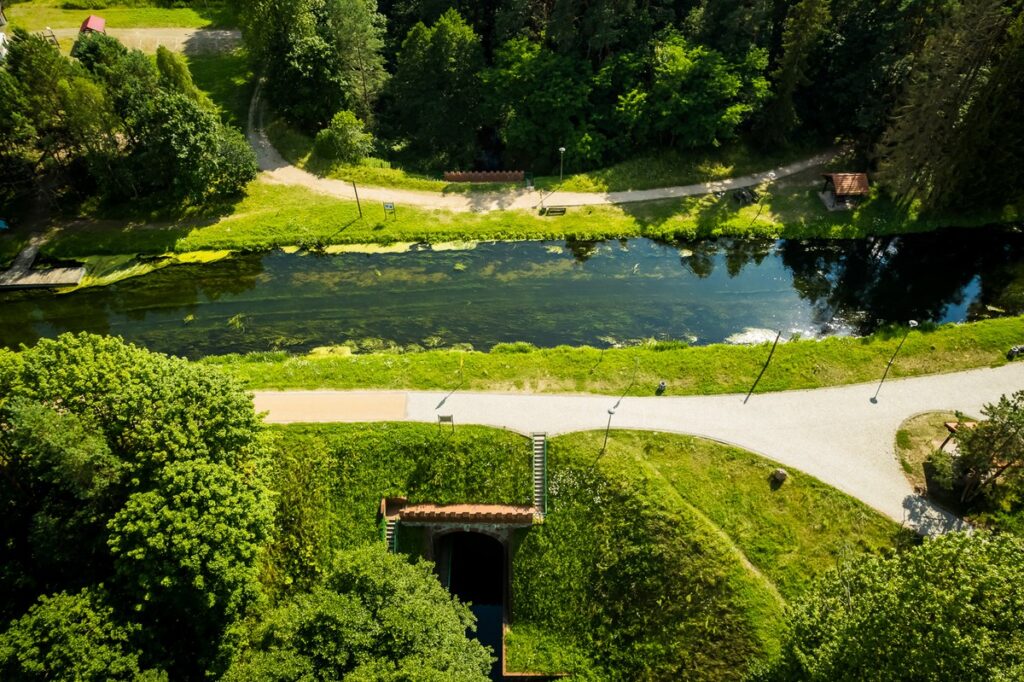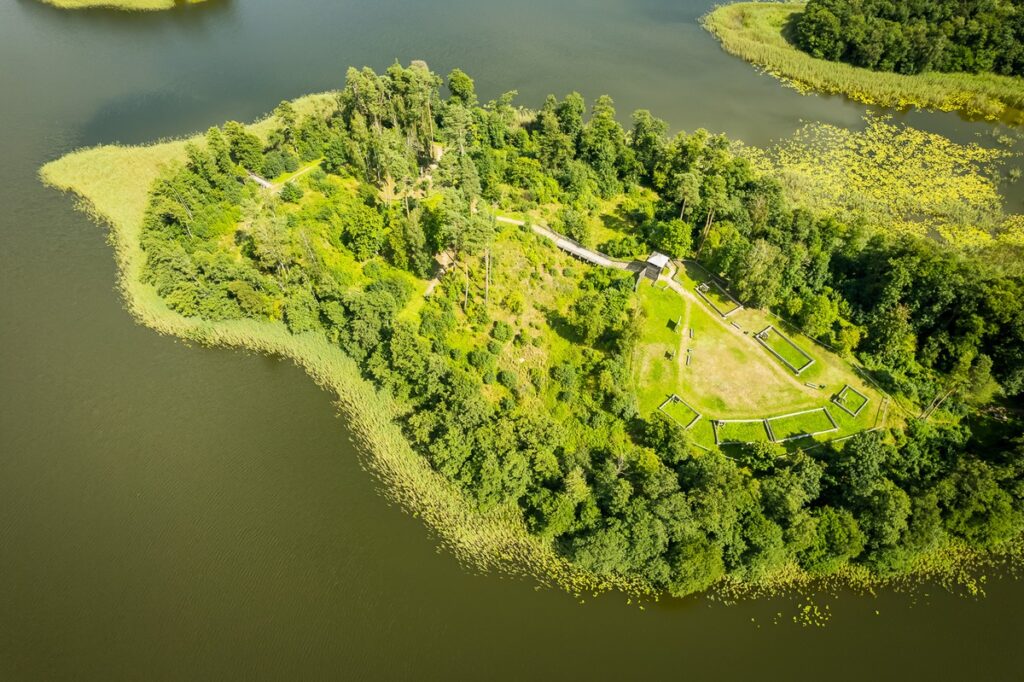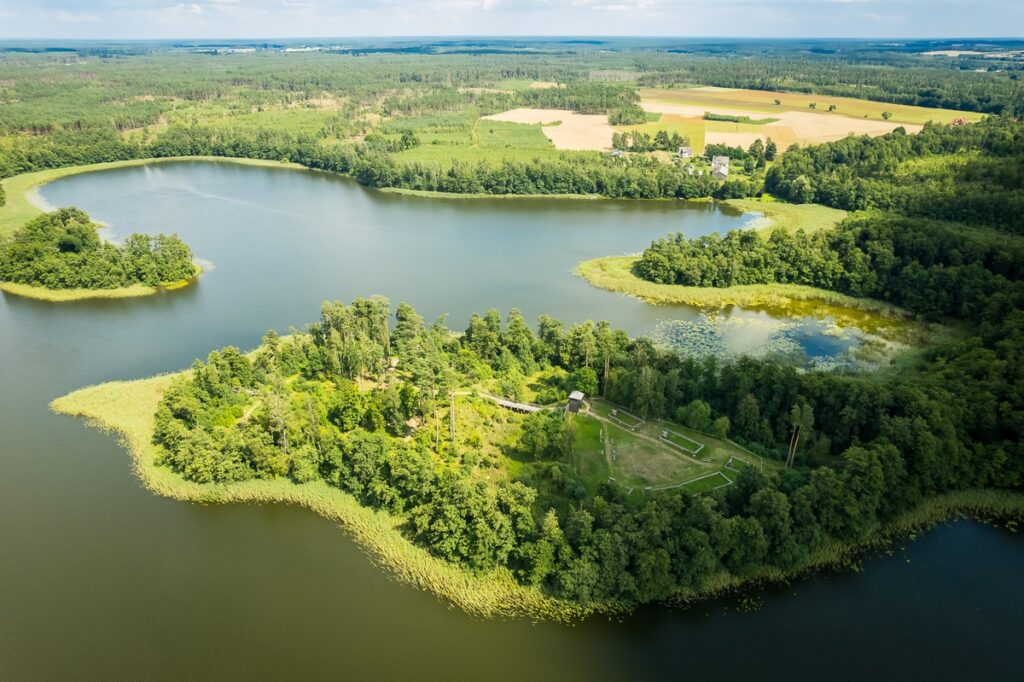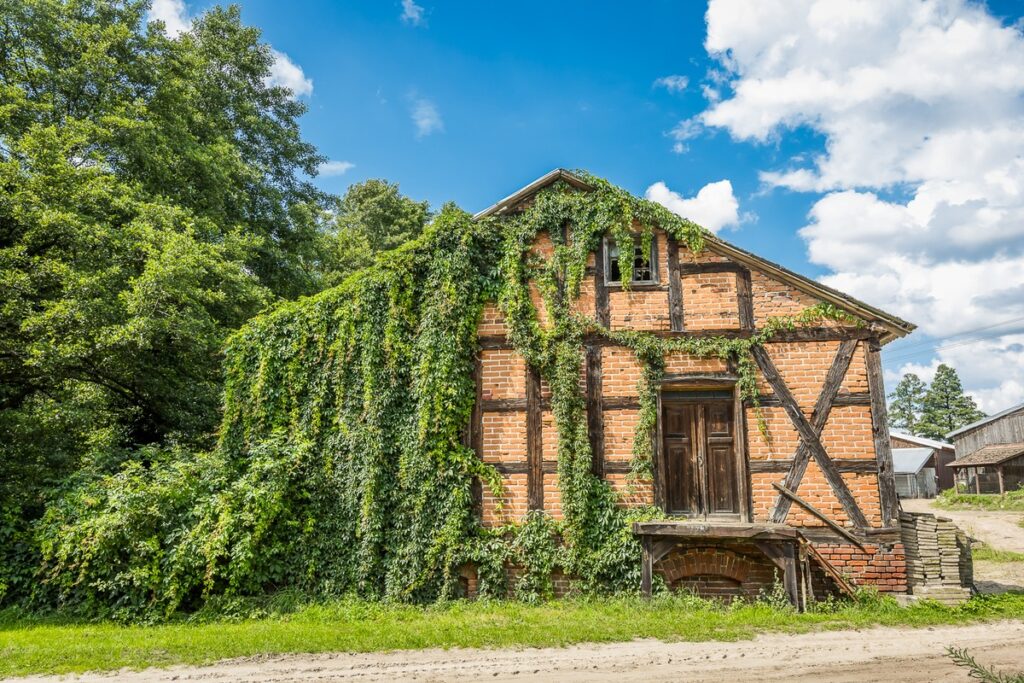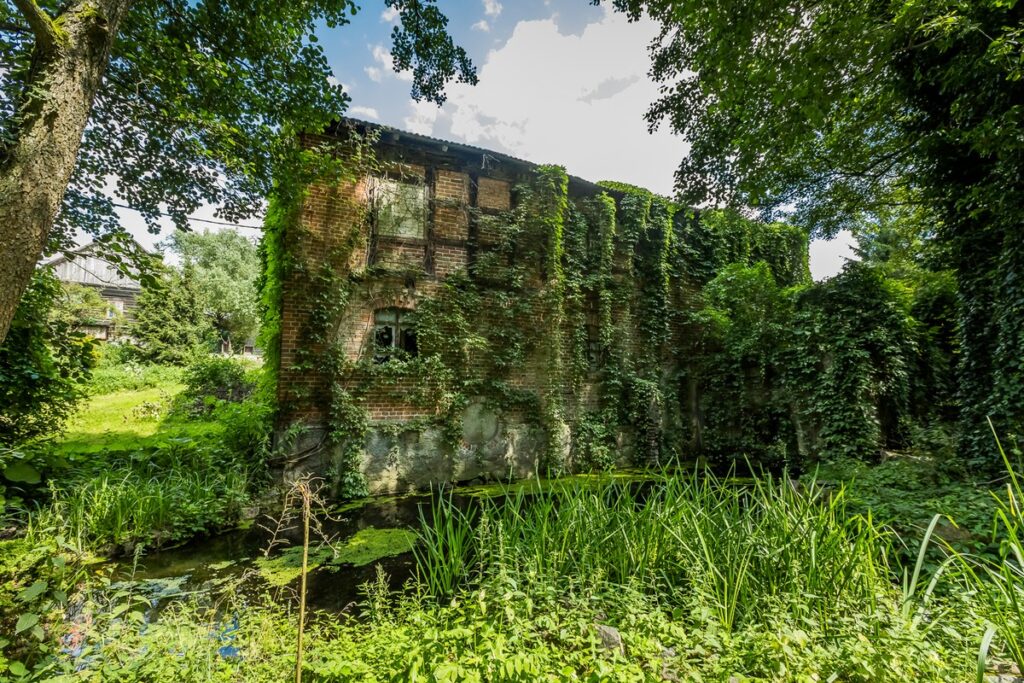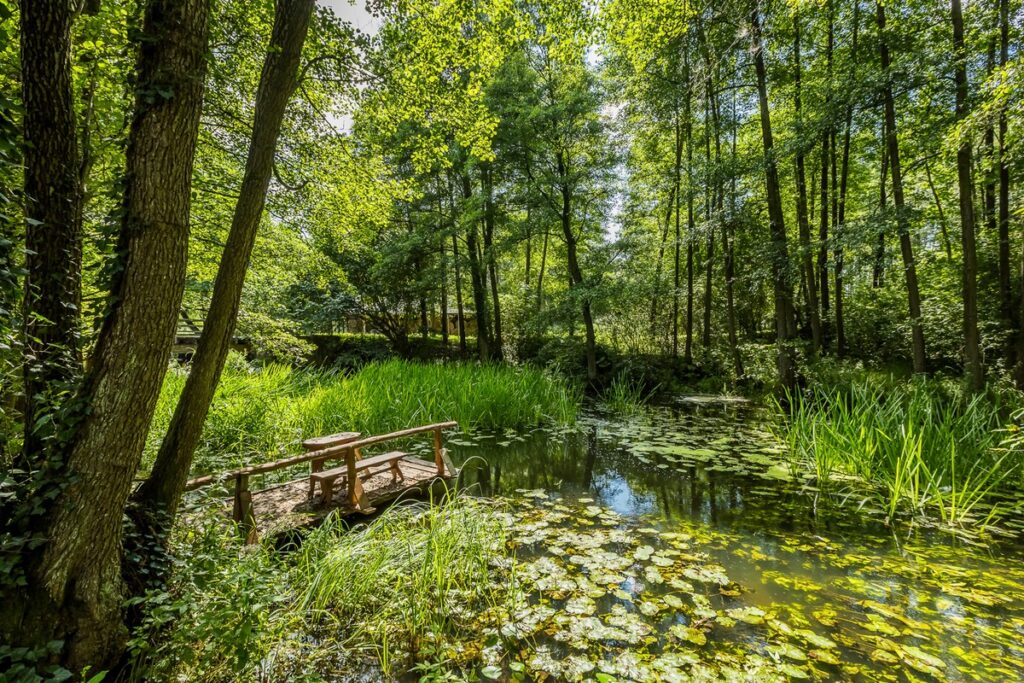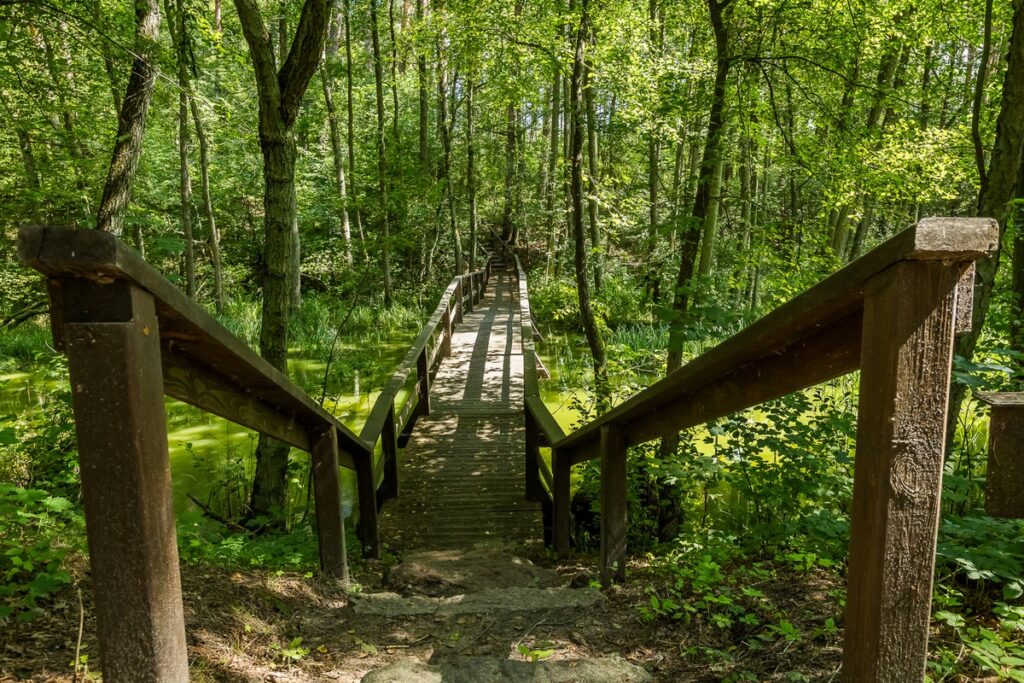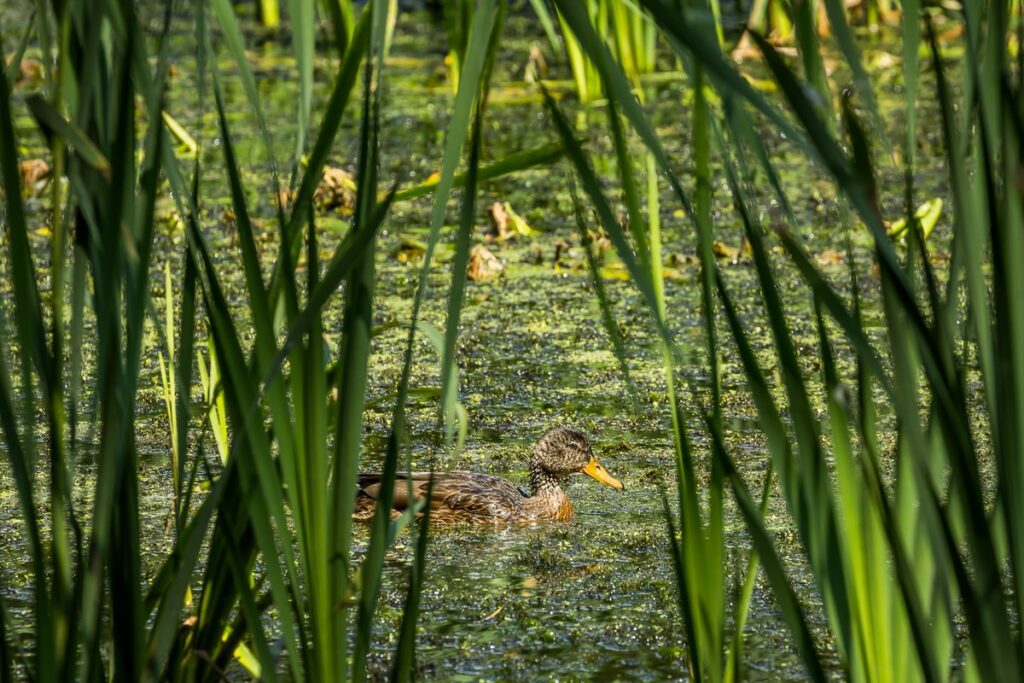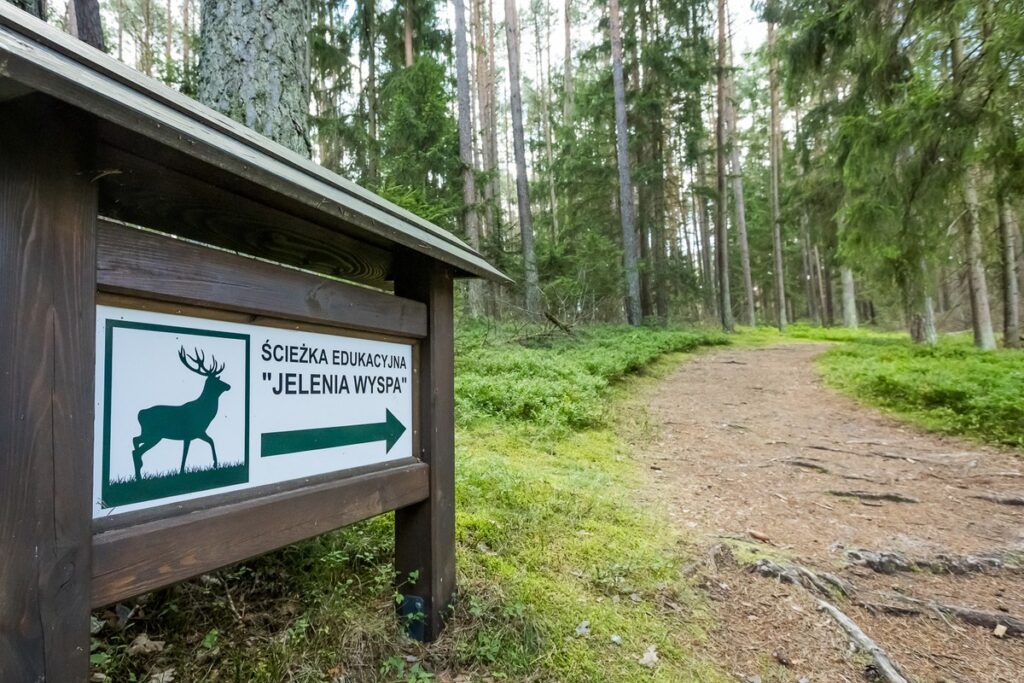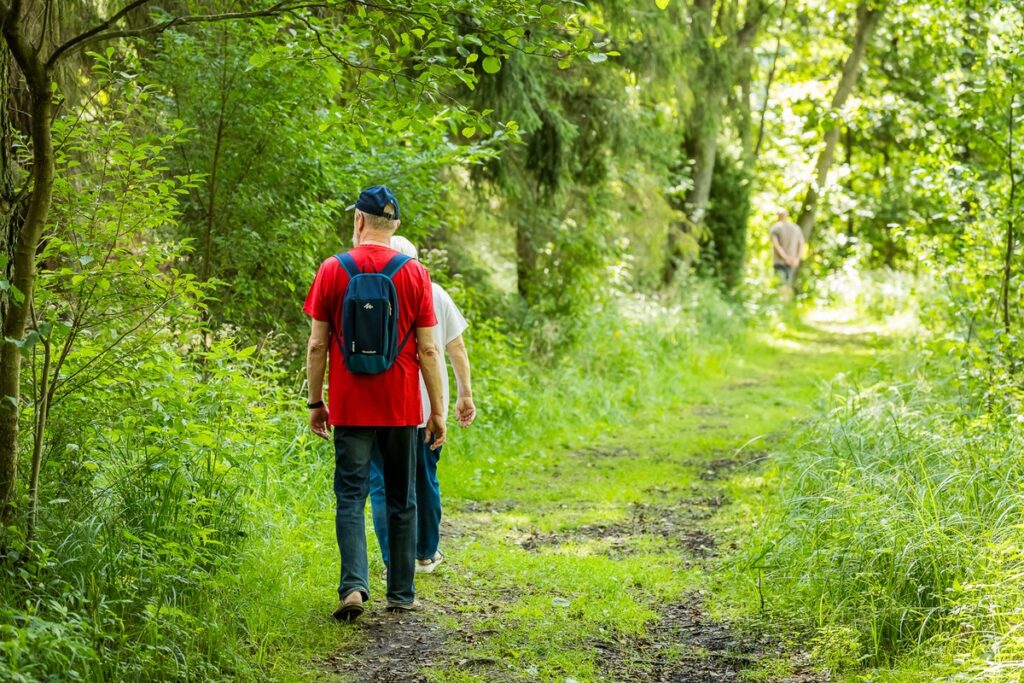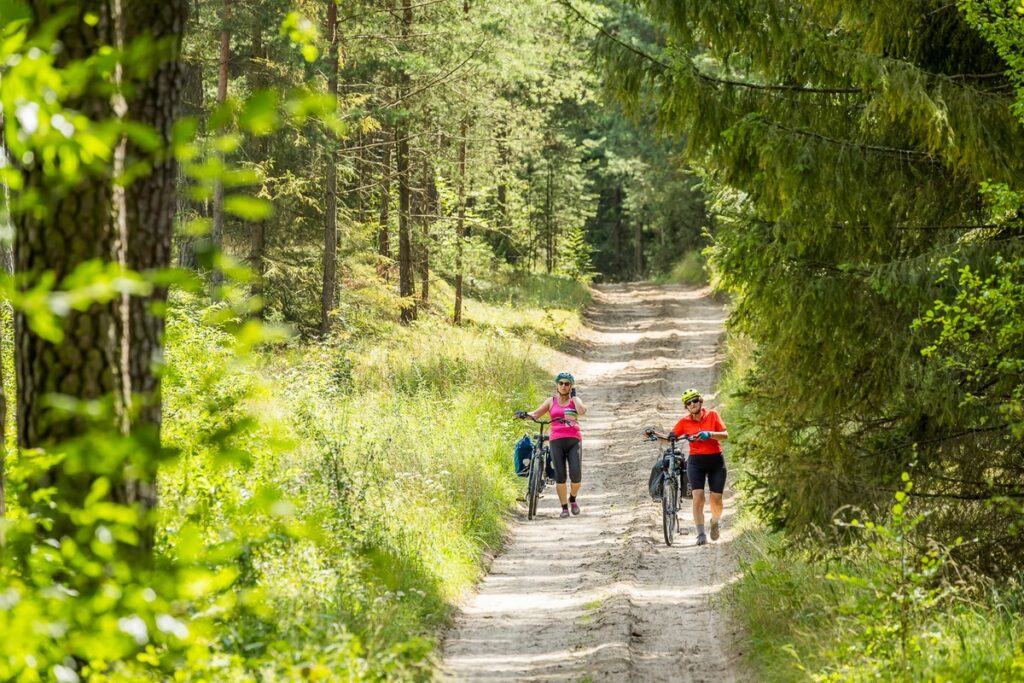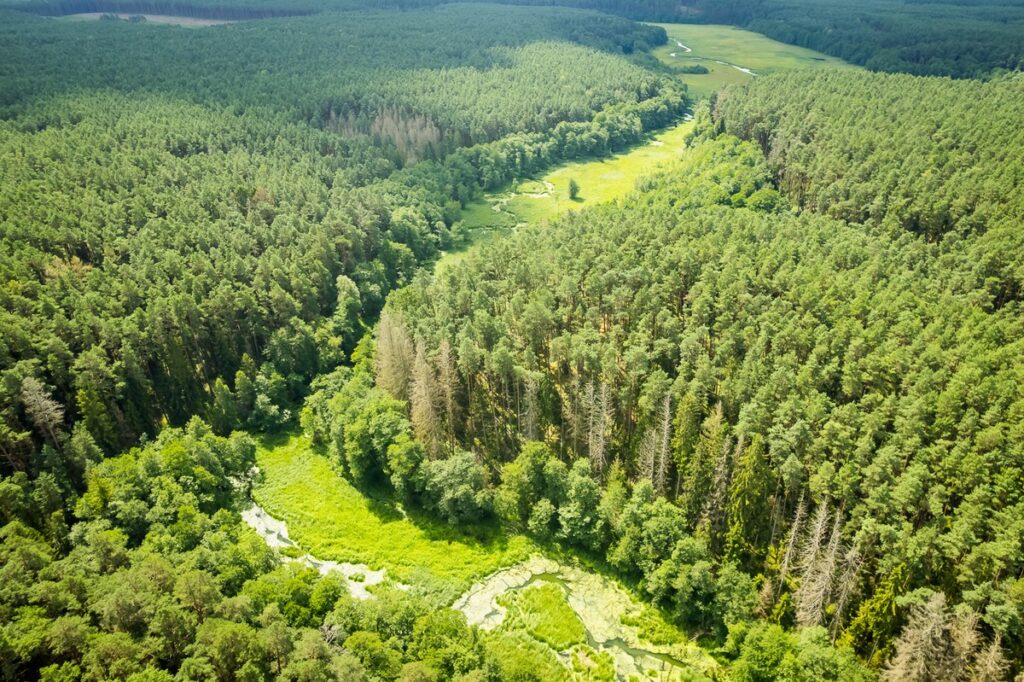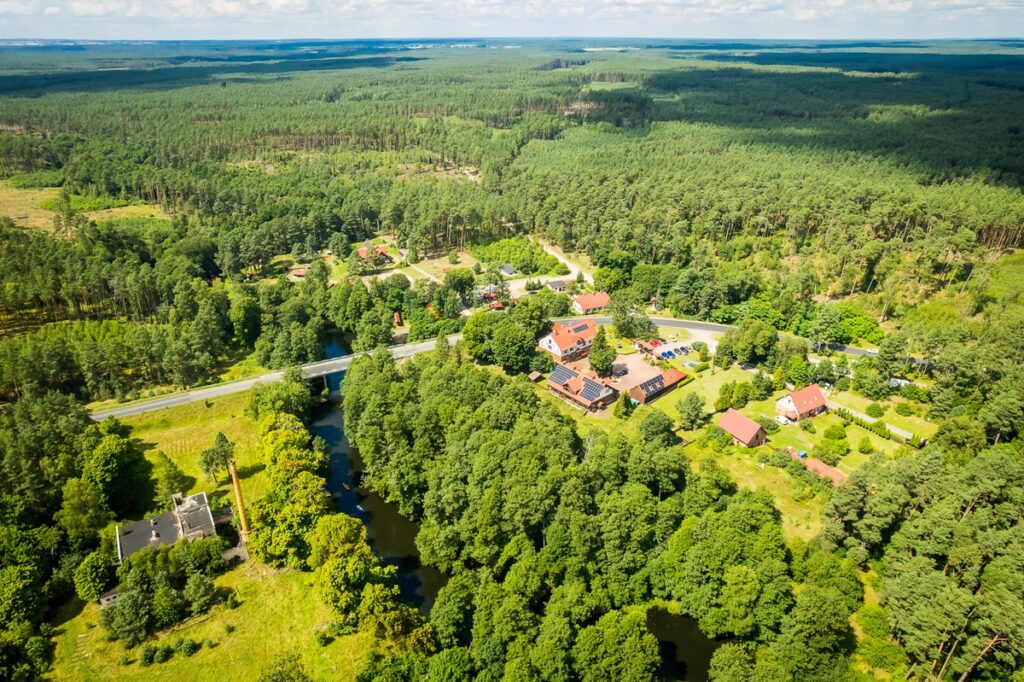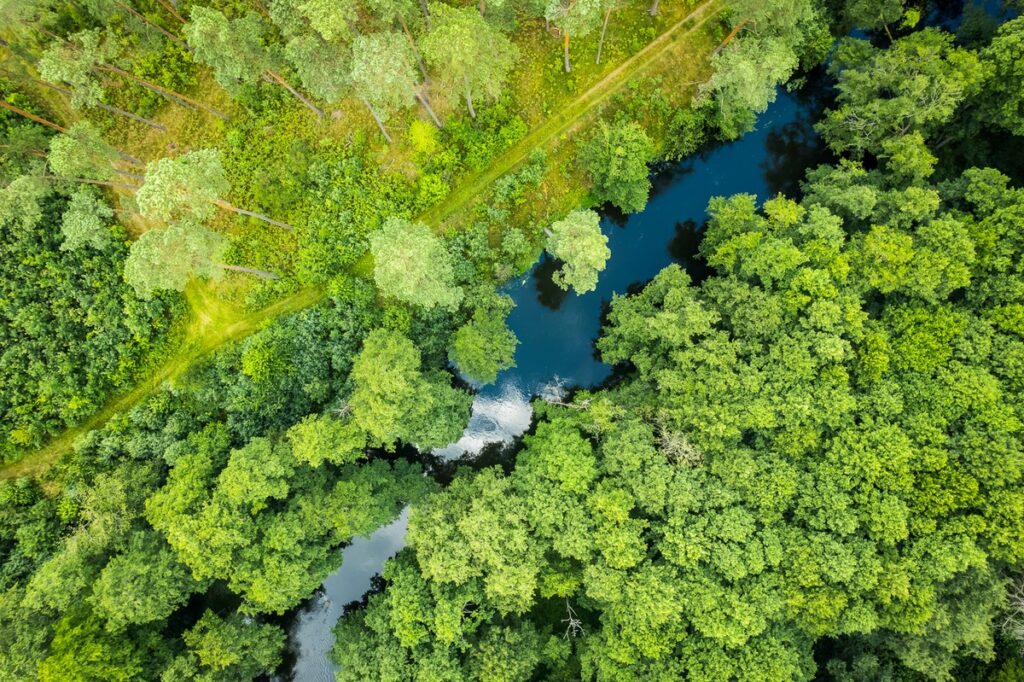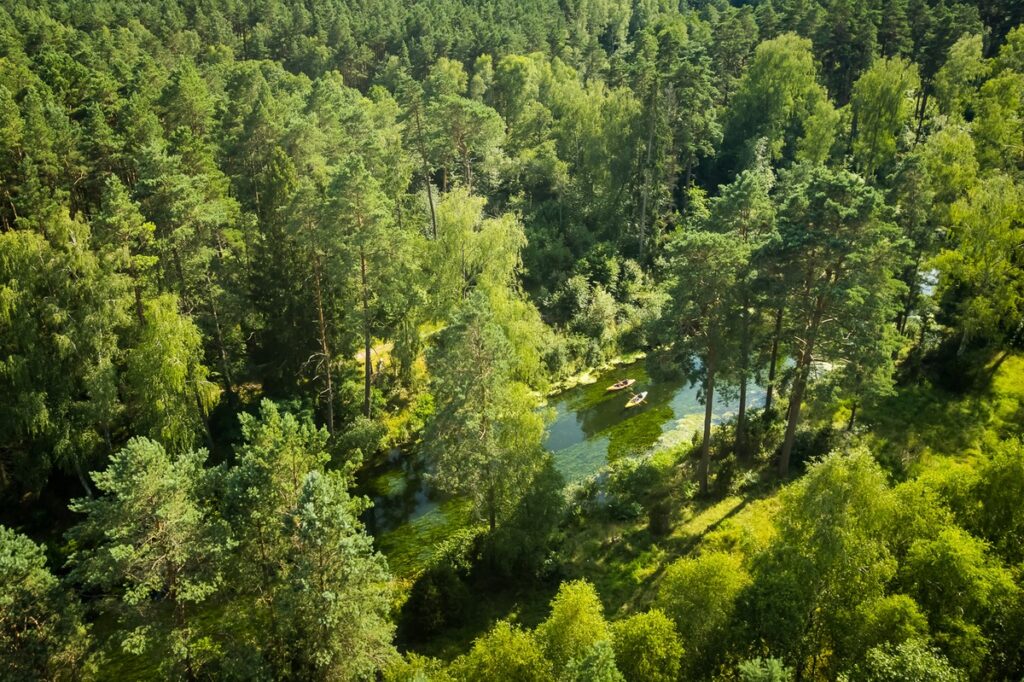
Tuchola Landscape Park invites you to enjoy mushrooms, fish and kayaking
Eight nature reserves in two regions, over 36,000 hectares of land, the Brda River, a network of lakes and forests full of mushrooms – the Tuchola Landscape Park is a great place for nature lovers and those interested in Kashubian history and culture to relax.
The Tuchola Landscape Park was established in 1985 to protect rare species of plants, mushrooms and animals, as well as historical traces of the former culture of these areas. It covers the south-eastern part of the compact complex of the Tuchola Forest, located in the Pomeranian and Kujawsko-Pomorskie voivodships. The symbol of the Tuchola Landscape Park is the kingfisher. It is in the Tuchola Forest, especially along the Brda and Wda rivers, that the largest number of breeding pairs of kingfishers in Poland and Europe can be found. This is facilitated by clean water bodies, wooded banks, sandy slopes and small fish, which are the main food source for kingfishers.
Flowing through dense pine forests, the Brda River is not only the water axis of the park, but above all an attractive canoeing trail popular with tourists. The lakes of the Tuchola Landscape Park are also good places to relax, where you can enjoy swimming and fishing. Among them are also large lakes with an area of several dozen hectares, and even 100 hectares. Such an area is covered, for example, by Lake Okonińskie, Lake Wielkie Cekcyńskie, Lake Śpierewnik and Lake Stobno. Tourists also enjoy hiking and cycling trails, which in the Tuchola Forest alone have a total length of over 600 kilometres (more about tourist trails in the Tuchola Landscape Park). Three educational trails have also been marked out in the park.
The forests of the Tuchola Landscape Park are full of mushrooms – over 100 species of edible mushrooms grow there. No wonder that these areas have been attracting mushroom pickers from even the most distant corners of Poland for years. The employees of the Tuchola Landscape Park, in cooperation with the Polish Mycological Society and the Tuchola Forest District, regularly organise the largest mushroom exhibition in Poland. Last year, the 31st edition of the event took place.
In 2010, the Tuchola Landscape Park was included in the boundaries of the Bory Tucholskie Biosphere Reserve. It is the tenth and largest biosphere reserve in Poland. Biosphere Reserves are protected areas designated worldwide by UNESCO as part of the Man and the Biosphere (MAB) programme. They are created to protect biodiversity and enable the observation of ecological changes on a global scale. The inclusion of a given area in the network of biosphere reserves confirms that it is worthy of protection not only on a national scale, but also on a global scale. Part of the reserve is the Bory Tucholskie National Park, established in 1996 in the Pomeranian Region.
Places worth seeing in the Tuchola Landscape Park:
The TPK Educational Garden at the headquarters of the Tuchola Landscape Park – it has a collection of many native and traditional plant species, nesting boxes for birds, bat boxes, insect hotels and shelters for amphibians, reptiles and other small mammals.
The Montania lignite mine in Piła near Gostycyn – it is the only preserved lignite mine in northern Poland, where lignite is extracted using traditional mining methods by drilling wooden-lined tunnels in coal seams and bringing it to the surface using mining carts and steam power.
Raciąski Mill – from the 14th century to the 1960s, there was a water mill there, and from the beginning of the 20th century, also a sawmill. In 1921, an electric turbine was launched. Currently, only the ruins of the buildings and fragments of sluices and gates remain.
Remains of a water mill in Nadolnik – a wooden building with a skeleton structure and brick infill, built on a high brick foundation, was erected in the second half of the 19th century.
The stronghold in Raciąż – it was once located on an island surrounded by the waters of Lake Śpierewnik. Today, as a result of the lowering of the lake’s water level, the former island has become a peninsula. During archaeological research, many remains of material culture, mainly from the Middle Ages, were excavated there.
The Museum of the Tuchola Forest in Tuchola – the best place to learn about the everyday life of the Borowiaks inhabiting these areas and the local fauna and flora.
The aqueduct in Fojutowo – a monument modelled on ancient structures, one of the biggest tourist attractions in Poland and the largest of three such structures on the route of the Great Brda Canal.
There are currently 10 landscape parks in Kujawsko-Pomorskie, for which the regional government is the governing body:
- Wdecki Landscape Park
- Brodnicki Landscape Park
- Gostynińsko-Włocławski Landscape Park
- Górznieńsko-Lidzbarski Landscape Park
- Krajeński Landscape Park
- Nadgoplański Millennium Park
- Tucholski Landscape Park
- The Lower Vistula Landscape Park Complex (formerly known as the Chełmno and Nadwiślański Landscape Park Complex), which consists of three parks:
- Chełmno Landscape Park,
- Nadwiślański Landscape Park
- Góry Łosiowe Landscape Park.
Press Office of the Marshal’s Office
7 August 2025
- Tucholski Park Krajobrazowy, Fojutowo, fot. Tomasz Czachorowski eventphoto.com.pl dla UMWKP
- Tucholski Park Krajobrazowy, Fojutowo, fot. Tomasz Czachorowski eventphoto.com.pl dla UMWKP
- Tucholski Park Krajobrazowy, Fojutowo, fot. Tomasz Czachorowski eventphoto.com.pl dla UMWKP
- Tucholski Park Krajobrazowy, Fojutowo, fot. Tomasz Czachorowski eventphoto.com.pl dla UMWKP
- Tucholski Park Krajobrazowy, Fojutowo, fot. Tomasz Czachorowski eventphoto.com.pl dla UMWKP
- Tucholski Park Krajobrazowy, Grodzisko w Raciążu, fot. Tomasz Czachorowski eventphoto.com.pl dla UMWKP
- Tucholski Park Krajobrazowy, Grodzisko w Raciążu, fot. Tomasz Czachorowski eventphoto.com.pl dla UMWKP
- Tucholski Park Krajobrazowy, Młyn w Nadolniku, fot. Tomasz Czachorowski eventphoto.com.pl dla UMWKP
- Tucholski Park Krajobrazowy, Młyn w Nadolniku, fot. Tomasz Czachorowski eventphoto.com.pl dla UMWKP
- Tucholski Park Krajobrazowy, Młyn w Nadolniku, fot. Tomasz Czachorowski eventphoto.com.pl dla UMWKP
- Tucholski Park Krajobrazowy, ścieżka edukacyjna Wyspa Jelenia, fot. Tomasz Czachorowski eventphoto.com.pl dla UMWKP
- Tucholski Park Krajobrazowy, ścieżka edukacyjna Wyspa Jelenia, fot. Tomasz Czachorowski eventphoto.com.pl dla UMWKP
- Tucholski Park Krajobrazowy, ścieżka edukacyjna Wyspa Jelenia, fot. Tomasz Czachorowski eventphoto.com.pl dla UMWKP
- Tucholski Park Krajobrazowy, ścieżka edukacyjna Wyspa Jelenia, fot. Tomasz Czachorowski eventphoto.com.pl dla UMWKP
- Tucholski Park Krajobrazowy, ścieżka edukacyjna Wyspa Jelenia, fot. Tomasz Czachorowski eventphoto.com.pl dla UMWKP
- Tucholski Park Krajobrazowy, ścieżka edukacyjna Wyspa Jelenia, fot. Tomasz Czachorowski eventphoto.com.pl dla UMWKP
- Tucholski Park Krajobrazowy, Woziwoda, fot. Tomasz Czachorowski eventphoto.com.pl dla UMWKP
- Tucholski Park Krajobrazowy, Woziwoda, fot. Tomasz Czachorowski eventphoto.com.pl dla UMWKP



